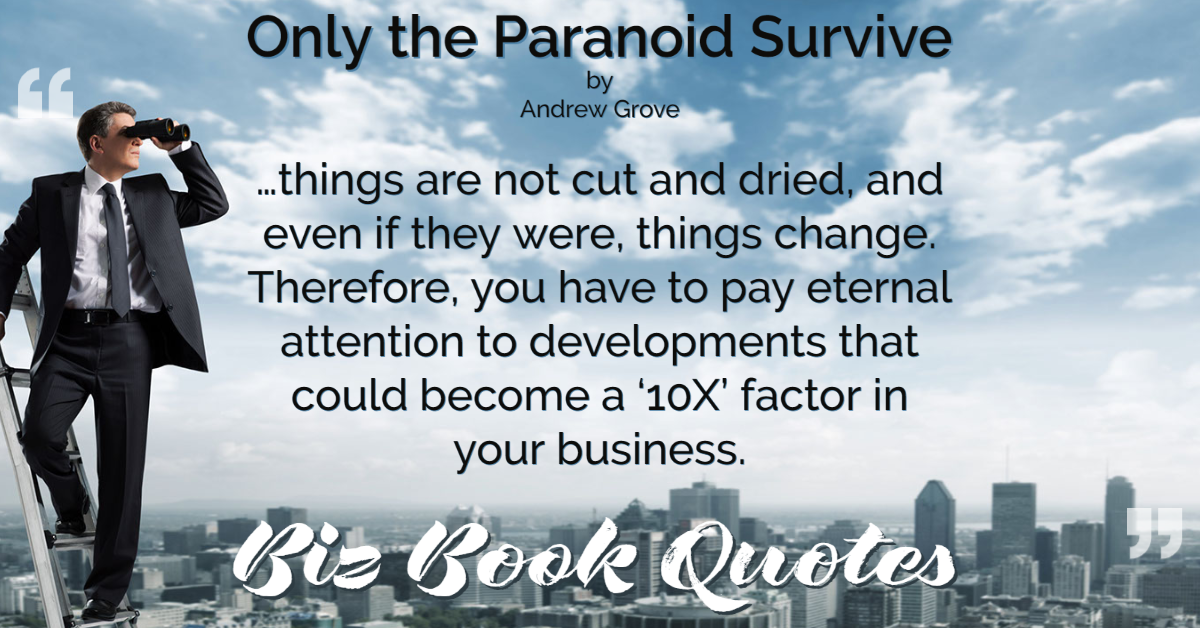 |
…things are not cut and dried, and even if they were, things change. Therefore, you have to pay eternal attention to developments that could become a ’10X’ factor in your business.
|
103 |
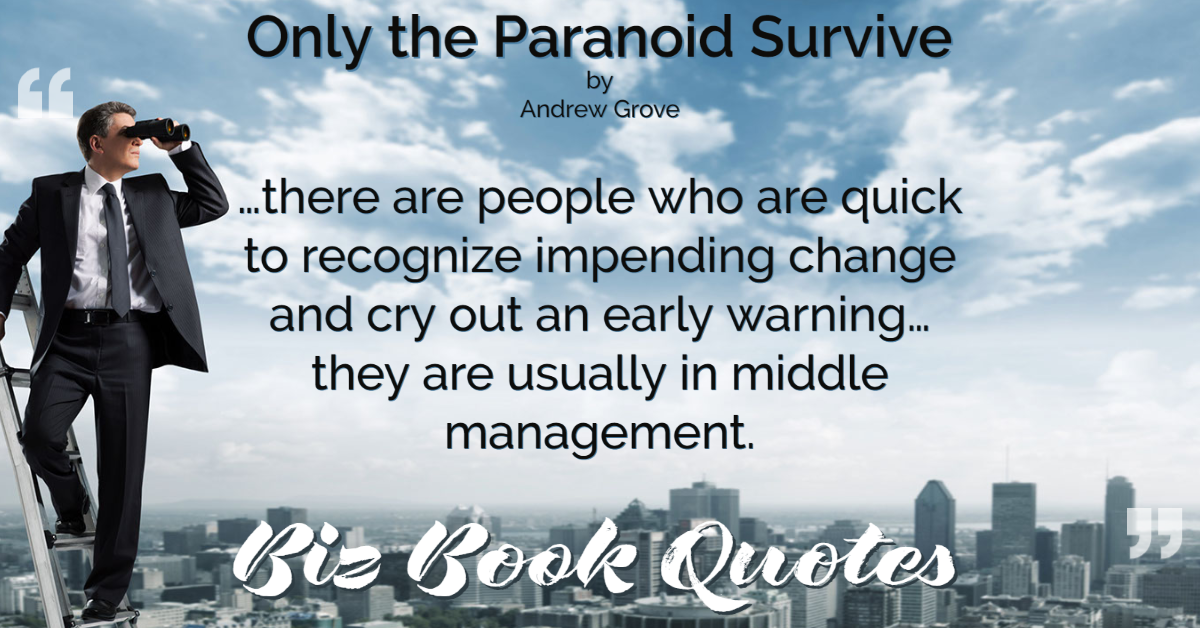 |
…there are people who are quick to recognize impending change and cry out an early warning… they are usually in middle management.
|
108 |
 |
…don’t shut off your radar screens and go on about your business, discounting everything even if at first it seems quite crummy.
|
112 |
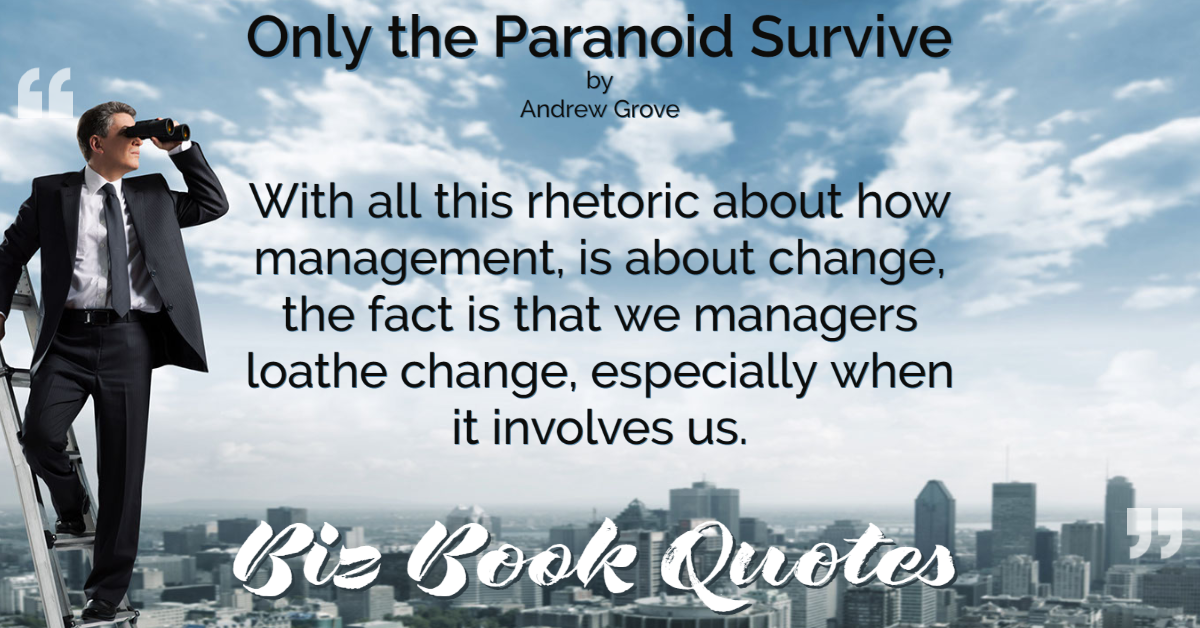 |
With all this rhetoric about how management, is about change, the fact is that we managers loathe change, especially when it involves us.
|
123 |
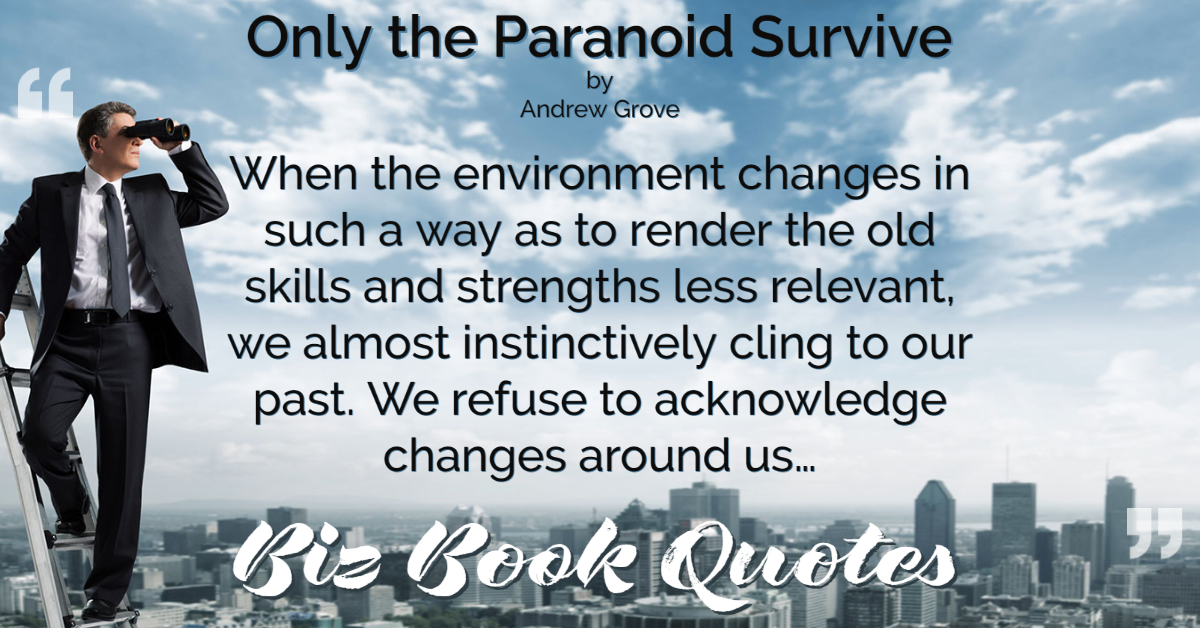 |
When the environment changes in such a way as to render the old skills and strengths less relevant, we almost instinctively cling to our past. We refuse to acknowledge changes around us…
|
127 |
 |
The dilemma is that you can’t suddenly start experimenting when you realize you’re in trouble unless you’ve been experimenting all along. It’s too late to do it once things have changed in your core business.
|
130 |
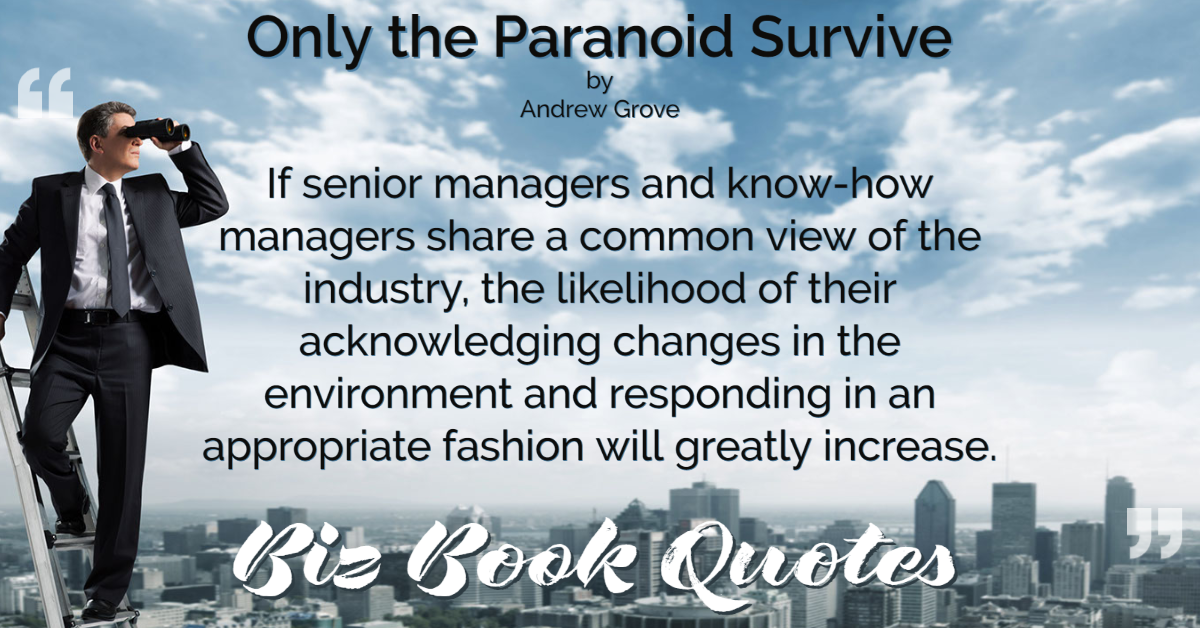 |
If senior managers and know-how managers share a common view of the industry, the likelihood of their acknowledging changes in the environment and responding in an appropriate fashion will greatly increase.
|
135 |
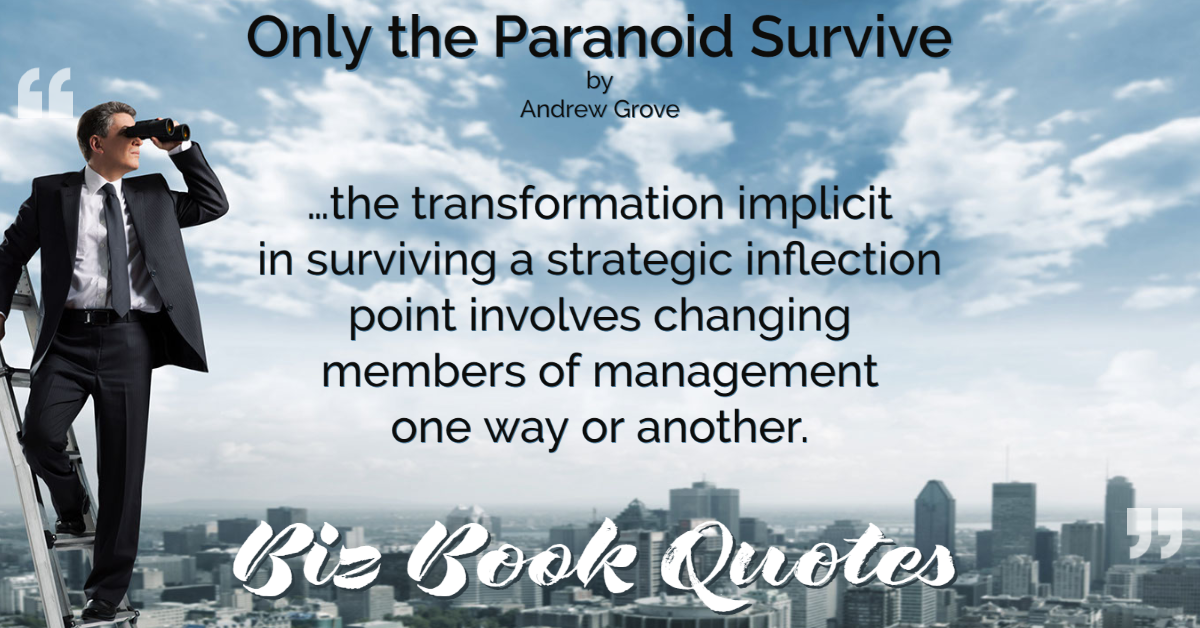 |
…the transformation implicit in surviving a strategic inflection point involves changing members of management one way or another.
|
143 |
 |
…the most effective way to transform a company is through a series of incremental changes that are consistent with a clearly articulated end result.
|
147 |
 |
Resist the temptation to do what’s easy… Communicating strategic change in an interactive fashion is not easy. But it is absolutely necessary.
|
157 |